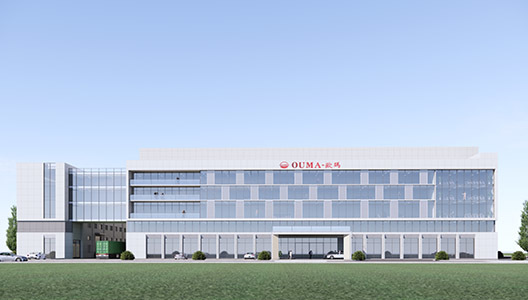Layout and installation instructions for the diesel generator room.
Nov 25,2024
The principles for the layout and installation of the machine room are: to ensure that the units (including the diesel engine, generator, and control panel) can operate normally, and to facilitate usage, operation, and maintenance.
The principles for the layout and installation of the machine room are: to ensure that the unit (including the diesel engine, generator, and control panel) can operate normally, and to facilitate operation and maintenance.
The following instructions are for reference only. Users should consider their actual usage conditions and the selected model when determining specific plans. Users may invite relevant professional technicians to design the machine room layout and implement construction.
1. The following points should be noted when designing the machine room:
1) If conditions permit, the diesel generator set and control panel should be placed separately, with the control panel located in an operation room equipped with soundproofing facilities and an observation window to allow operators to understand the unit's operating status in a timely manner.
2) When installing the exhaust silencer, the exhaust outlet should be placed outdoors. The exhaust pipe should not be too long, and if possible, the surface of the exhaust pipe should be wrapped with insulating material to reduce heat dissipation into the room.
3) The machine room should have good ventilation conditions, especially around the air filter where there must be sufficient fresh air. No items that produce corrosive gases such as acidic gases are allowed in the machine room.
4) Closed-type generator rooms generally do not require forced ventilation; air can be expelled outdoors through fans attached to the unit to promote air circulation within the room. However, appropriate intake and exhaust openings must be set up. For open-type generator rooms, forced ventilation should be adopted if necessary, but intake openings must be low, and exhaust fans should be installed at the highest position in the room to ensure that high-temperature airflow is expelled outdoors in a timely manner.
5) In addition to ventilation requirements for unit installation, considerations for lightning protection, sound insulation, vibration isolation, fire safety, environmental protection, lighting, and sewage discharge must also be taken into account. In northern regions, heating measures must also be implemented to ensure that the unit can start normally.
6) Fuel pipelines and cables should be laid inside troughs or trenches whenever possible; cables can also be laid inside conduits. Daily fuel tanks can be placed indoors but must meet requirements.
7) A space of 0.8 to 1.0 meters should be left around the unit without placing other items to facilitate inspection and maintenance by operators.
8) The machine room should adopt comprehensive measures for soundproofing of the unit and sound insulation of the machine room.
2. Requirements for the installation foundation of diesel generator sets
1) The installation foundation of diesel generator sets should be able to withstand twice the static weight of the generator set itself. If the machine room is located within a connected building and has vibration isolation requirements, vibration isolation foundations should be used. The design of vibration isolation foundations should be done by a civil engineer. The foundation can be prefabricated before unit installation, with fixed anchor holes reserved on it. After leveling it horizontally, place the unit on top so that all support points make even contact; uneven areas can be filled with thin steel plates or rubber pads. Finally, secure it with pressure plates or bolts to prevent loosening during use.
2) The foundation structure of diesel generator sets should be determined based on the soil structure of the foundation. Generally, refer to the following formula to calculate the minimum thickness of the foundation:
FD=W×P÷(D×B×L)
FD = foundation thickness, unit: millimeters;
W = total weight of generator set (wet weight), unit: kilograms;
D = concrete density, approximately 2322 kilograms/m³;
B = foundation width, unit: meters; width of unit + 0.3m;
L = foundation length, unit: meters; length of unit + 0.3m;
P = percentage of load-bearing equipment on the foundation; generally between 1.8 and 2.
The isolation foundation can be raised above ground level by 150mm to facilitate maintenance and servicing of the generator set.
3) The bottom of the foundation should be compacted. The concrete foundation must have at least seven days from pouring until installation for it to cure properly. When pouring concrete, fixed anchor holes should be reserved according to the position of base fixing holes; hole dimensions are 120×120mm with a depth of 450mm for fixing bolts.
4) The unit can use public chassis anchor holes for fixed installation or adopt pressure plate installation; when using pressure plate fixation, the width dimensions of base anchor holes should be calculated accordingly.
5) There are no special requirements for independently installed control panel foundations; a cable trench or embedded cable conduit should be provided between the unit and control panel.
6) Requirements for auxiliary facilities of diesel generator sets
Connections for oil, water, and exhaust pipelines required by diesel generator sets must be clean and unobstructed; connections must be secure and sealed reliably. Electrical wiring must be arranged orderly and securely without looseness; there should also be sewage trenches around the foundation.
3. Installation precautions
3.1. The selection of installation and usage locations should meet the following conditions:
1) Good ventilation; ambient temperature is recommended not to exceed 40℃.
2) Clean environment; avoid placing items nearby that can produce acidic or alkaline corrosive gases and vapors.
3) It is advisable to install indoors or in places that can avoid direct sunlight and rain.
4) Locations with sufficient water sources (for open-loop units).
3.2. If the unit is used as a fixed power generation device with a concrete foundation, it must be measured for levelness using a level during installation so that it is fixed on a level base. If not fixed on a base, appropriate elastic pads should be placed under the chassis to prevent excessive vibration.
3.3. If used indoors, hot air discharged from fans and exhaust gases from diesel engines should be directed outdoors. The connected exhaust pipes should not have too small diameters or too many bends to ensure smooth exhaust flow. It is advisable to incline pipes slightly downward so that any condensed moisture inside can flow out easily.
**Note:** If corrugated exhaust pipes are installed, they cannot compensate for any displacement caused by installation errors using corrugated pipes; especially avoid twisting caused by installation. For corrugated pipes with internal flow guides, they should be installed correctly according to exhaust flow direction.
3.4. Fuel tanks should have filtering devices; fuel levels in tanks must not fall below the base plane of diesel engines.
3.5. The connecting wires between the unit and the customer's low-voltage control panel should be laid in the cable trench.
3.6. The unit must be equipped with a grounding wire, and the grounding must be good.
3.7. The battery should be located near the starter motor side.
3.8. Exhaust pipes and mufflers should be supported by brackets or supports to avoid stress on the turbocharger.
4. For other requirements, please carefully read the diesel generator set user manual.
Hot Tags:
Contact Us
E-mail:
oumapower@163.com
Tel:
+86-510-88609781
Address:
No. 209, Zhangjing East Section, Xigang Road, Xibei Town, Xishan District, Wuxi City










